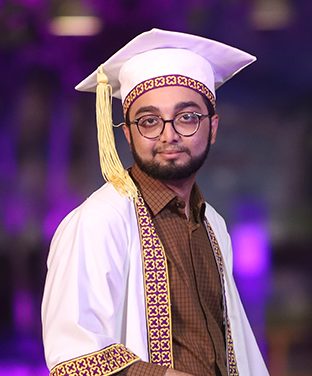
MUHAMMAD USAID
Aspiration Statement
I am interested in research and would like to work as a researcher or a professor in the future. I am interested in quantum computing/quantum information and deep learning in modern cosmology. I love working with data using artificial intelligence to solve problems.
Core Skills
- Tableau
- C++
- LaTex, Python
- JavaScript
Academic Awards / Achievements
- Latvijas Universitate - Quantum Computing & Programming
- HU TOPS 100% Scholarship
- Dean's List Spring 2019
- Dean's List Fall 2020
Experience
Leadership / Meta-curricular
- Physics and Astronomy Club 2019-2020 - Vice President
- NJV Secondary School - Volunteer Teacher of Programming Fundamentals
Internship / Volunteer Work
- Securiti - Software Development Engineer
- QWorld - Research Intern
- Habib University - Developed GPA Calculator for HU Website
- Habib University - Teaching Assistant (Discrete Mathematics)
- Habib University - Teaching Assistant (Mechanics and Thermodynamics)
Publications / Creative Projects
- Error Analysis of Covid Data in Pakistan
- Deblending Galaxy Images with GANs
- Quantum Perceptron
- Tadrees Virtual Coaching
Final Year Project
Project Title
Estimating Photometric Redshifts with Deep Convolutional Neural Networks
Description
We have developed a new architecture called "PhotoNet" to estimate photometric redshifts of galaxies on large-scale surveys. The photometric part means that data comes from photometric surveys which consist of images from telescopes through different filters. We have worked with five channels ugriz data coming from SDSS (Sloan Digital Sky Survey) where ugriz means bands capture ultraviolet, green, red, infrared and brightness. We have also visualized the output from intermediate layers of our network to understand its behavior and working. The future of modern cosmology is studying large-scale structures and this model is an important contribution in astronomy that relies on future large scale photometric surveys.